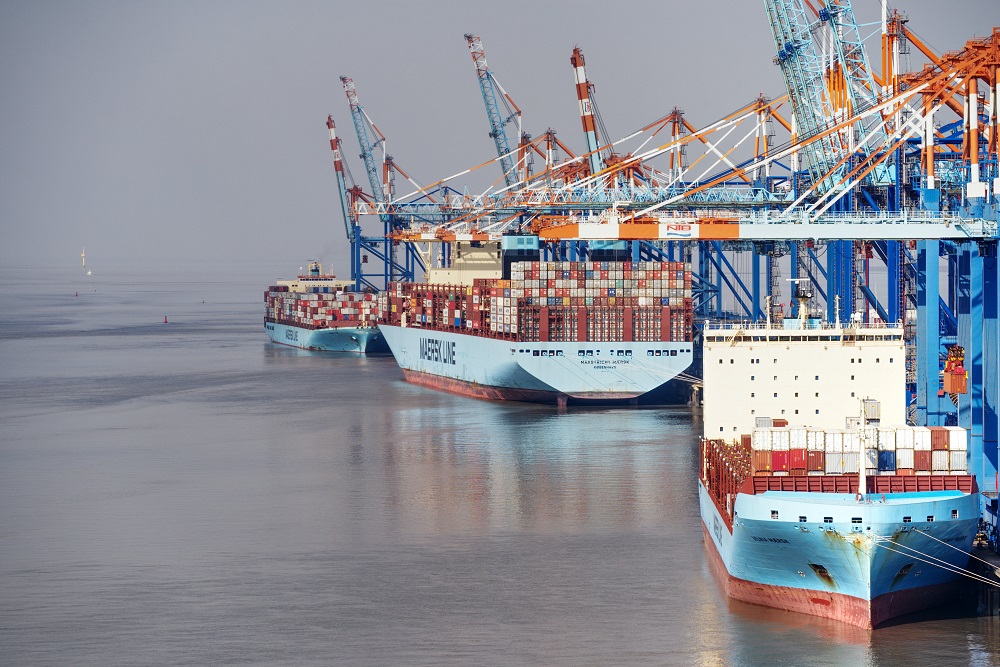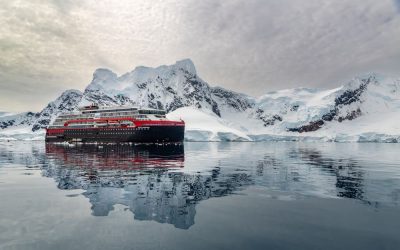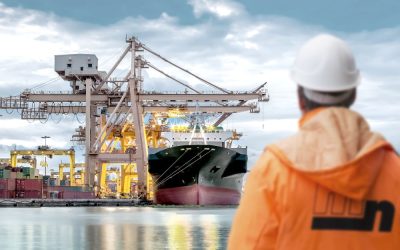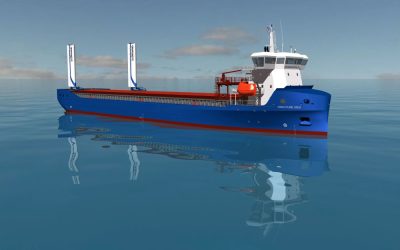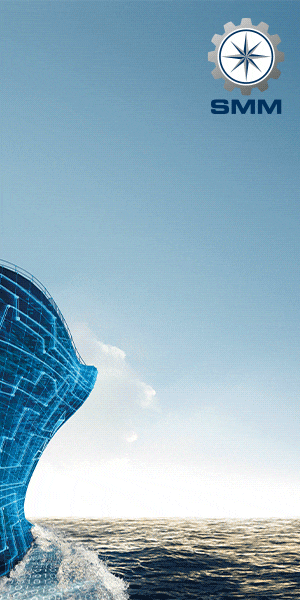Clarksons Research has published data indicating that nearly half of all vessels ordered last year by tonnage will be capable of running on some form of alternative fuel.
The latest edition of Clarksons’ Green Technology Tracker report, published on the 2nd January, charts the continuing progress of alternative fuel uptake and investments in energy saving technologies across the global merchant fleet. It reveals that 539 vessels ordered last year would be capable of running on alternative fuels, representing 45% of vessels ordered by gross tonnage. While LNG dual fuel vessels still comprise the largest share of these order with 220 vessels – 152 of these being for LNG carriers – there were also 125 orders for methanol dual fuel vessels, 55 orders for LPG and four ships that will be fuelled by ammonia. Additionally, many other vessels are being as ‘ready’ for conversion to these fuels in the future.
Overall, Clarksons calculates that 2,583 vessels currently on order will be powered by alternatives fuels, representing 48.8% of the orderbook by gross tonnage and 23.2% by the number of vessels. Again, LNG continues to dominate (37.5% by gt), but with methanol (8.3%, but an additional 5.8% ‘ready’) and ammonia (9.3% ‘ready’) gaining traction.
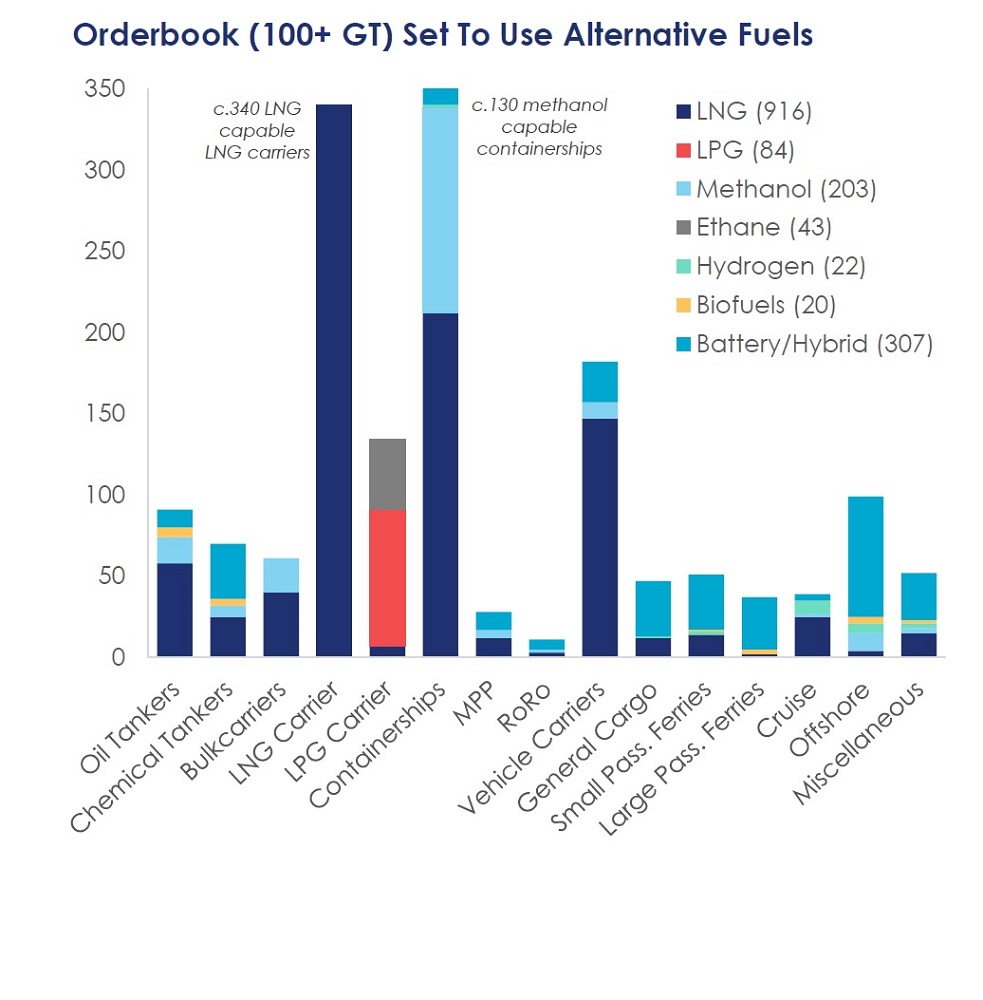
Source: Clarksons Research
With regard to uptake of green technologies, the researchers note that 32% of tonnage currently operating can now be classed as ‘eco vessels’, with the use of Energy Saving Technologies (ESTs) continuing to expand. Wind propulsion solutions are showing notable uptake, with 47 vessels now operating using some form of wind assistance and a further 47 currently on order. Air lubrication systems (ALS) are also growing massively in popularity; currently 166 vessels (1.2% of gt) in service have an ALS installed but with a further 268 newbuildings planning to do so (14.3% of orderbook gt). Additionally, there are presently 31 vessels trialling carbon capture technologies and 22 vessels on order.
However, Clarksons cautions that by 2026 around 45% of tankers, bulkers and container ships will be D or E rated under IMO’s Carbon Intensity Indicator (CII) scorings, which set a rising standard for energy efficiency. Under CII, ships that achieve a D rating for three consecutive years or an E rating in a single year, are required to develop a corrective action plan under Part III of the Ship Energy Efficiency Management Plan (SEEMP).
Clarksons also notes that the average age of these cargo ship is now two to two and a half years older than three years ago as shipowners prevaricate on renewing ageing vessels.
